And Evil Comes (2)
The vision of the “seven eyes of God” is one of the most mysterious symbols in the whole of the book of Revelation. They are the ultimate vision of God in deep connection with the reality of humankind. It is in this sense that state surveillance of the citizens, understood in its present terms, as a state of continuous and fanatic scrutiny of other human beings by means digital-electronic, or biological (a widespread legalized stalking of the otherwise average us) is one of the most devious and sadistic readings of the symbol of a conscious and united community with an inner vision.
So the Bible uses the language of symbolism and imagery because [it is] the language of symbolism and imagery, which bypasses argument and aggressiveness and at the same time clearly defines the difference between life and death, between freedom and slavery, between happiness and misery, in short the language of love, and according to St. Paul, that is likely to last longer than most other forms of human communication.
Northrop Frye
Context
The book of Revelation, as mentioned in And Evil Comes, establishes a blueprint for absolute Evil; it discloses its structure, its anatomy. That is, the book of Revelation is a literary construct that reveals the human engagement with destruction and denial of life in its final form: continuity. As such Revelation possesses an unbound wealth of traditional or even spiritually revolutionary symbols, but whose distorted replica constitutes Evil’s way of articulating and actualizing itself: Evil is parasite on vision, parasite on light, parasite on Life, on which it feeds uncontrollably.
In And Evil Comes I suggested a list of possible correspondences between today’s world events and symbols or characters in the book of Revelation. I also mentioned that this is always the case in every period of history that was compelled (for whatever reason) to search answers in the book of Revelation, from the quiet (or unquiet) individual to persecuted groups, wars, famines, tyrannies, or whichever natural or man-caused disasters they may have faced. This is still true of our day. Evil follows a pattern of events, and rests on a recurrent number of reasons or justifications. For Evil, humanity is always the “too many”.
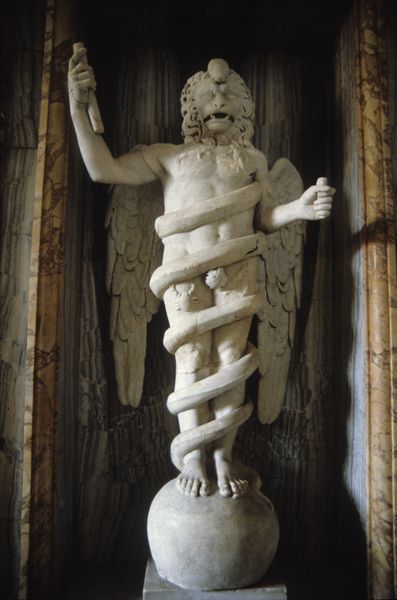
Human epochs may be seen as cycles, recurrent in striking manner in their broad lines, and the book of Revelation is isomorphic with each of those cycles. This is what a classic functions like in literature, expressing an archetype of human behavioral structure however general or minutiae, and its deep ramifications into spiritual presence or awareness. But when it comes to a classic possessing the breadth and depth of the Bible the archetype its humanity itself; a story of redemption in its long hard struggle between Good and Evil. Yes, it is an opposite. And it is an opposite because in the process of aping God, or the divine, Evil forgets all too easily its role: not of tempting, but of forging the human will.
Evil always lies, hides, and censors. But once it reaches a given point unchecked, it annihilates indiscriminately since it knows no measure and understands no balance. Being a product of a more encompassing reality, it is unable to comprehend it. This is true of today, and it will be true tomorrow too.
Revelation: A Renewed Antitype
In this article I want to approach one of those correspondences between the book of Revelation and human events as they relate to evil-doing at a grand genocidal scale, which is what I mean by absolute Evil.
An antitype, generally something that corresponds to or is foreshadowed in a type (Merriam Webster), is applied in Bible studies to the correlation of New Testament events with other events found in the Old Testament, which are correspondingly called types.[1]More generally this applies to any book in the Bible that can be understood, sequentially, to clarify or fulfill the meaning of a previous one (its type proper). Furthermore, the book of Revelation is seen by some scholars (notably Northrop Frye) as itself an antitype of the whole of the Bible, and in particular the New Testament, to the point where Frye advances the possibility that all that is told in this book may find a correspondence in some passage of the Bible.
The book of Revelation, and the Bible in general, seem to point to Evil being a corruption of the divine, the goodness of angels or men. More precisely Evil seems to be a “parody” of God, of its works (mankind being the most remarkable) and institutions (temple or church, rituals, sacrifices, etc.); a mockery no doubt, but also an imperfect and distorted copy of it all. Item by item Evil is a caricature of creation reflected on a broken mirror in the mud. In a sense, it is as if Evil had no imagination, or more importantly life of its own, and it was as a result the work of observant apes (surveillance-prone, you may say) without the ability to construct for themselves, or to fully understand the workings and psychology, and perhaps direction of all things human.
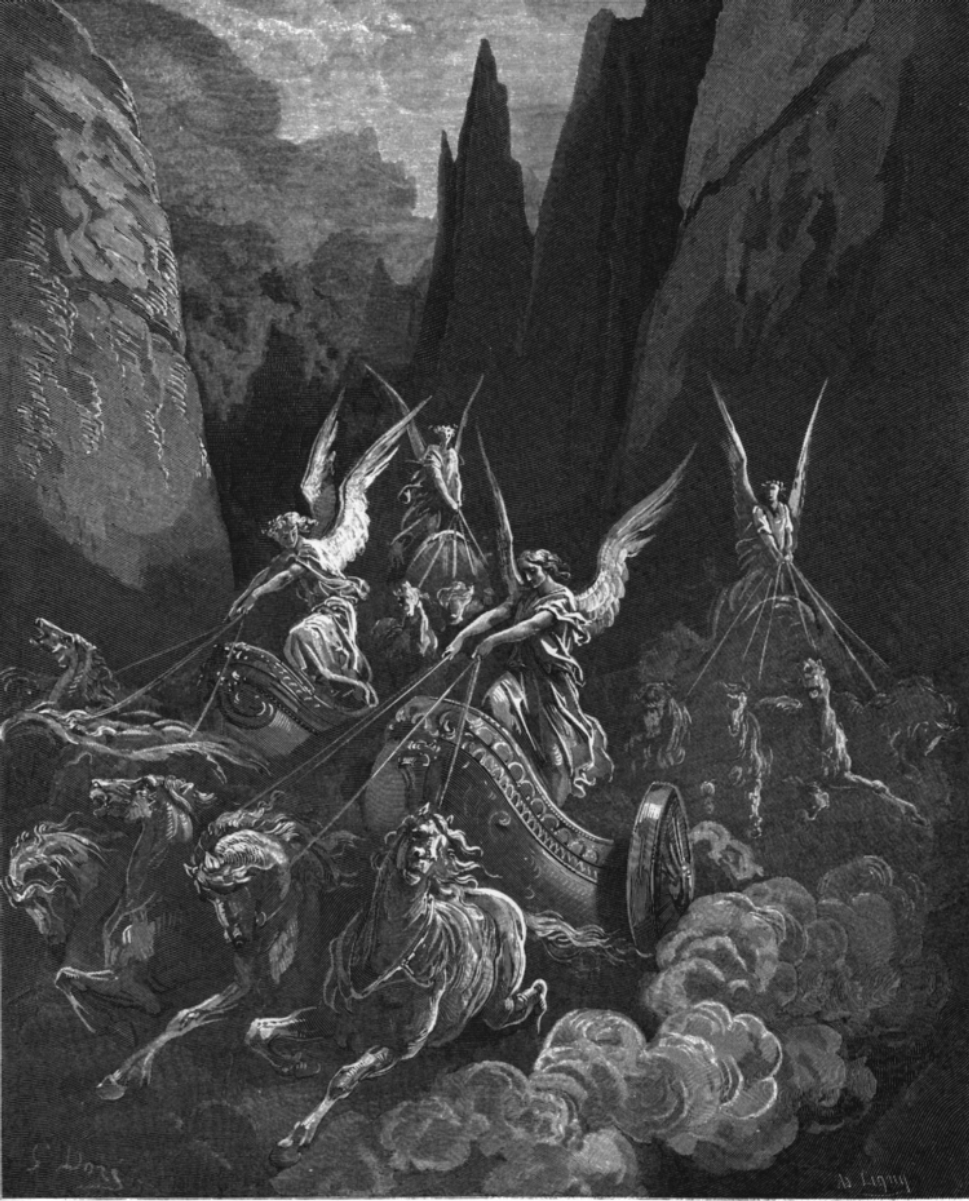
https://everipedia.org/wiki/lang_en/Book_of_Zechariah
Every grand idea, concocted by evil minds is a parody of a liberating spiritual counterpart. Not the opposite. Homo sapiens may have begun his career as a murderous ape, intelligent enough to organize itself in killer gangs with smart weapons just as we see today, but the case is that the dawning of consciousness, and with it spirituality —that divine light that so momentous changes operated on the clever ape—, is a qualitative change that must be sustained and carried forward. At all costs.
3 Therefore say to them, ‘Thus says the Lord of hosts: “Return to Me,” says the Lord of hosts, “and I will return to you,” says the Lord of hosts.
Zech 1, NKJV
4 “Do not be like your fathers, to whom the former prophets preached, saying, ‘Thus says the Lord of hosts:” Turn now from your evil ways and your evil deeds.”‘ But they did not hear nor heed Me,” says the Lord.
It seems obvious that the spirit, however conceived, points to a reality of community, meaning, and salvation. It appears to suggest redemption from the physical reality in the only way possible, which is freedom from bondage and dehumanizing demands, those that chain our feet, hands, and neck to the shadowy platonic wall.
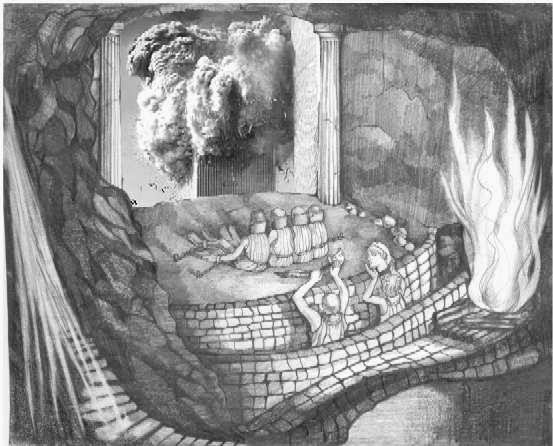
Freedom like an ideal marriage of spirit and flesh, a true bond of love, one essence, two necessary and inevitable sides. Freedom by limitation, or freedom by extension of a “one” through an “other”, of “us” through “them”, is what is truly revolutionary about Freedom, . The ephemeral dichotomy and profound complementarity of women and men, within their radical equality, however diverse, however inclined, is a clever way for nature to make us conscious of how the whole thing works. What we are is a fractal reflection of what nature is and does. Negating this is simply Death, and a great deal of zeroes to the left.
Every time absolute Evil rears its contorted face (and it is easy to see that face reflected on its unfortunate apish victim) a brand new quickening appears in response. The need for the light is such that Evil, one may think, could even be the mechanism by which humans attained a higher understanding and imaginative vision (at least those that are not utterly possessed or destroyed by it); Evil may be a trump card of sorts that stands for something else; something that we have not been able to fully understand yet, and destructive possibly because of this.
Mirceal Eliade alludes to this in his work entitled Mephistopheles and the Androginy. He writes that, as has often been noted, “while Mephistopheles opposes the flow of life by all means, he at the same time encourages it. He fights against the good, but ends up favoring it.” He continues saying that this “life-denying demon is, however, a co-worker with God”, and that this is why God “in his divine foreknowledge, is satisfied to place him beside man as a companion.”

Credit: https://angelorum.co/card-meanings/tarot-devil-card/
Returning to the heading of this article, in his Bible seminars known as The Bible and literature: a personal view, Northrop Frye mentions a curious archetype to which one may not pay initially too much attention. This archetype, or symbol appears in the book of Revelation:
And I beheld, and, lo, in the midst of the throne and of the four beasts, and in the midst of the elders, stood a Lamb as it had been slain, having seven horns and seven eyes, which are the seven Spirits of God sent forth into all the earth.
Rev. 5:6, KJV (emphasis mine).
The antecedent, or type of this vision can be readily found in Zechariah 3:9* and Zechariah 4:10* . These seven eyes are commonly associated with Spirits or sometimes with the seven planets known at the time, as they truly scan the Earth with their then mysterious erratic movements. In the context of the Old Testament we do not find much information about these eyes, and we need to wait all the way up to Revelation and John’s septenaries to begin making good sense of it.
Frye says:
“At the end of the Bible we are presented with something like [a] challenge to vision; man is ordinarily an ego and he is a center of perception [when] he looks outward into a world of time and space [,] which is objective to him and I think it is being suggested at the end of the book of Revelation that man might start trying to achieve the perspective on things, that God is represented all through the Bible as having, God is presented as viewing all times and spaces at once as seen from a circumference to a center [,] he has seven eyes that run to and fro throughout the earth and while it might seem fantastic that ordinarily human experience can get anything of that perspective, nevertheless it seems to me there is some reversal of our ordinary way of seeing things that is suggested to us at the end.”
N. Frye, The Bible and literature: a personal view (my emphasis)
This is to me one of the most difficult or enigmatic passages I have read from Frye. His usual compact highly nuanced style seems almost to falter at this point. Some experiential referential seems to be missing and Frye appears to struggle even to only vaguely suggest it.
To my mind the nearest, and no less cryptic description of this experience, or vision, or intimacy with meaning, was Jorge Luis Borges’ The Aleph. In this tale the Aleph is a point in space containing all other possible points. Whoever gazes into the Aleph can see “everything in the universe from every angle simultaneously, without distortion, overlapping, or confusion.” [2]https://en.wikipedia.org/wiki/The_Aleph_(short_story).There is a valuable discussion of Borge’s The Aleph implications (among other good resources online) in … Continue reading
“On the back part of the step, toward the right, I saw a small iridescent sphere of almost unbearable brilliance. At first I thought it was revolving; then I realised that this movement was an illusion created by the dizzying world it bounded. The Aleph’s diameter was probably little more than an inch, but all space was there, actual and undiminished. Each thing (a mirror’s face, let us say) was infinite things, since I distinctly saw it from every angle of the universe.”
Jorge Luis Borges, The Aleph
Perhaps we can also work our way around Frye’s thoughtful insight by analyzing the key word vision and seeing its distorted image in the broken mirror of Evil.
And we may not have to go too far:
16 And he causeth all, both small and great, rich and poor, free and bond, to receive a mark in their right hand, or in their foreheads:
Rev 13, KJV.
17 And that no man might buy or sell, save he that had the mark, or the name of the beast, or the number of his name.
It is obvious to many, to the multitude really, that today’s surveillance apparatus that weighs so heavily on people and cancels freedom in so many subtle ways is only weighing heavier by the day, with every new decree or policy refusing to be put to the test of time, argument, or informed discussion. The all-seeing eye of Sauron in The Lord of the Rings is an apt example from literature: an Evil creature that scans a Middle Earth searching for his magic golden ring. Searching, whichever way we may see it, for power; a power that in view of the breath-taking abyssal advances of modern technology and biotechnology we may not call magic anymore. An eye of Sauron for every living creature on the planet, man or beast, all pets and all slaves.
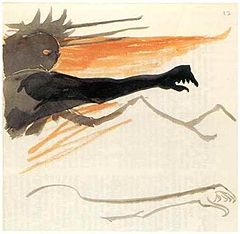
J. R. R. Tolkien‘s watercolour illustration of the literary character Sauron.
(See: https://en.wikipedia.org/wiki/File:Sauron_Tolkien_illustration.jpg)
Looking for the Type
We may see in this perverted image of God’s encompassing vision (or its equivalent, the believer’s circumferential view of the world) a surveillance cobweb nightmare, a network of nodules and centers that cover every inch of the physical world and capable of altering the mind through whatever hidden-tech means available; a black widow’s web that reaches out into every corner of human privacy and intimacy, and possibly every biological cell of the human body too. We may see it, in sheer contradistinction to Frye’s “reversal of our ordinary way of seeing things”, like an end state of all things human: not an enlargement of the vision and an increase of spirituality and human freedom, but as eternal bondage in a dungeon world. Your body being a cell itself, tied up and uploaded (an evil parody of “elevation” or “ascension”, also resembling Plato’s Allegory of the Cave, found in his Republic) to an Argus cloud of ever-watching implacable eyes.
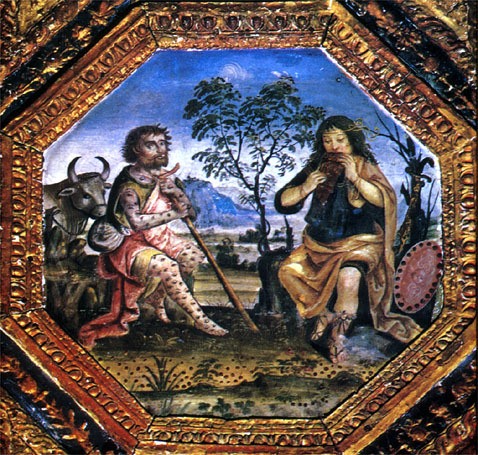
Argus was a 100-eyed giant who served the goddess, Hera. Argus never closed more than half of his eyes at once, so he never missed anything. At the behest of Hera, he killed Echidna* and would later be given the task of guarding the nymph, Io, who was disguised as a cow. However, Zeus had Hermes kill Argos and Hera subsequently sent a gadfly to chase Io wherever she went and to continuously sting her. [3]See also https://en.wikipedia.org/wiki/Argus_Panoptes
We can only guess what the mythological Argus can suggest to a sick mind, or to a sick world, what its role in the unfolding of Evil may mean to us. Quantum dots are quantum eyes too, forever haunting the human flesh until in return, like Oedipus, we ourselves gauge our physical eyes out in order to see only from the inside, as the Furies harass and stalk us. The world of light, scorched by Evil in its insidious genocidal persecution of humankind, is a dismal affair. Only turning our gaze away from the world sickness of corruption and abject perversion can we really see. This is the third eye and the spirit.

The “circumferential view” of the world, as opposed to maniacal state or police surveillance, can only be the ultimate idea of human connection and understanding, impracticable as it may sound, but nonetheless already a part of our daily lives, and just in the brink of global consciousness. However defiled by Evil minds and deeds, the reality of that connection is felt by most, especially all those that the old Evil in New garment attempt to massively cull or sterilize. An idea is just an idea: its creators or discoverers deserve all the credit. But if not offer to the world is made, no bargain struck, no social contract renewed, these ideas will dwell in the shadows and rotten, spawning, and becoming the seeds of a new Evil.
Evil now rules the world, and Good is clearly visible again as its victim, rival, and final conqueror.
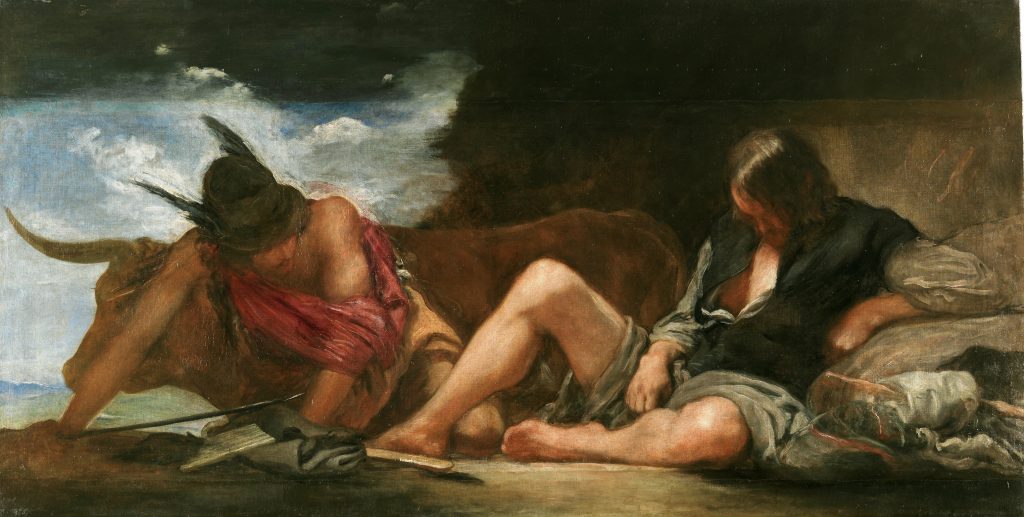
A more likely type for these seven eyes of God roaming the earth is a curious, if not mysterious passage in the book of Job:
“And the Lord said to Satan, “From where do you come?” So Satan answered the Lord and said, “From going to and fro on the earth, and from walking back and forth on it.”
Job 1:7, NKJ.
Here there is no mention of eyes to be sure, but to imagine just what would Satan be doing going “to and fro” about the world does not take too much imagination to consider. What Satan seems to imply is that his business is with the world, and what strikes us most is that God asks him at all. Perhaps God is simply admonishing Satan in an indirect way, knowing perfectly well what the Devil is up to. Another way of looking at it, certainly not orthodox but still suggestive is to think of Satan as the earthly eyes of God: his bloodhound so to say.
This last possibility is truly disturbing. But can we assume that this would have escaped John’s recollections of the Bible, or his readings of it? How could that be possible, being the book Job the very type of the monsters of Rev. 12 and 13? And being Job himself a likely type for the suffering Christians throughout the book of Revelation. It is a disturbing possibility, no doubt, to think that all the Evil that now saddens the hearts, and threatens humanity with genocide is part and parcel with man’s realization of his ultimate destiny on Earth: becoming fully conscious of a working and integrated community of humans. An observant race no doubt, but whose vigilance is set to avoid the ultimate catastrophe of extinction.
References
| ↑1 | More generally this applies to any book in the Bible that can be understood, sequentially, to clarify or fulfill the meaning of a previous one (its type proper). |
|---|---|
| ↑2 | https://en.wikipedia.org/wiki/The_Aleph_(short_story). There is a valuable discussion of Borge’s The Aleph implications (among other good resources online) in https://www.thefreelibrary.com/Place+in+Borges%27s+%22El+Aleph%22%3a+the+irony+of+revelation.-a0111113592 |
| ↑3 | See also https://en.wikipedia.org/wiki/Argus_Panoptes |
| ↑4 | The image represents the divine astuteness – Hermes, the “messenger” – snatching the treasure of divine Future and Fertility (represented by Zeus), taking advantage of the unconscious arrogance and complacency of Argus, the archetype of surveillance and Hera’s monster, Hera being the archetype of jealousy beyond measure. |
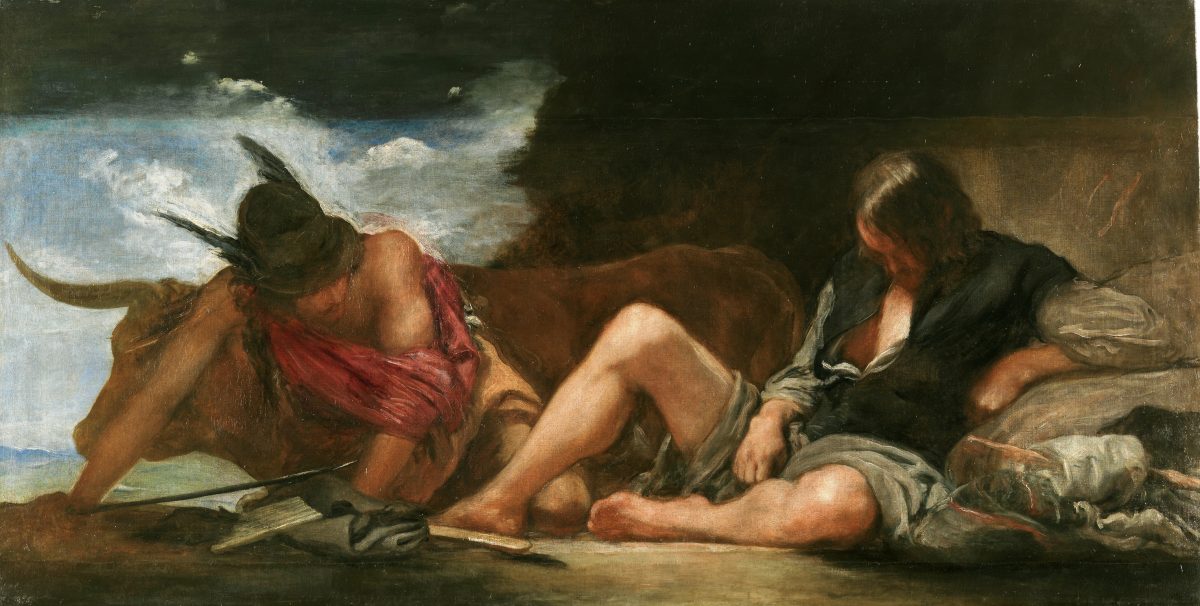
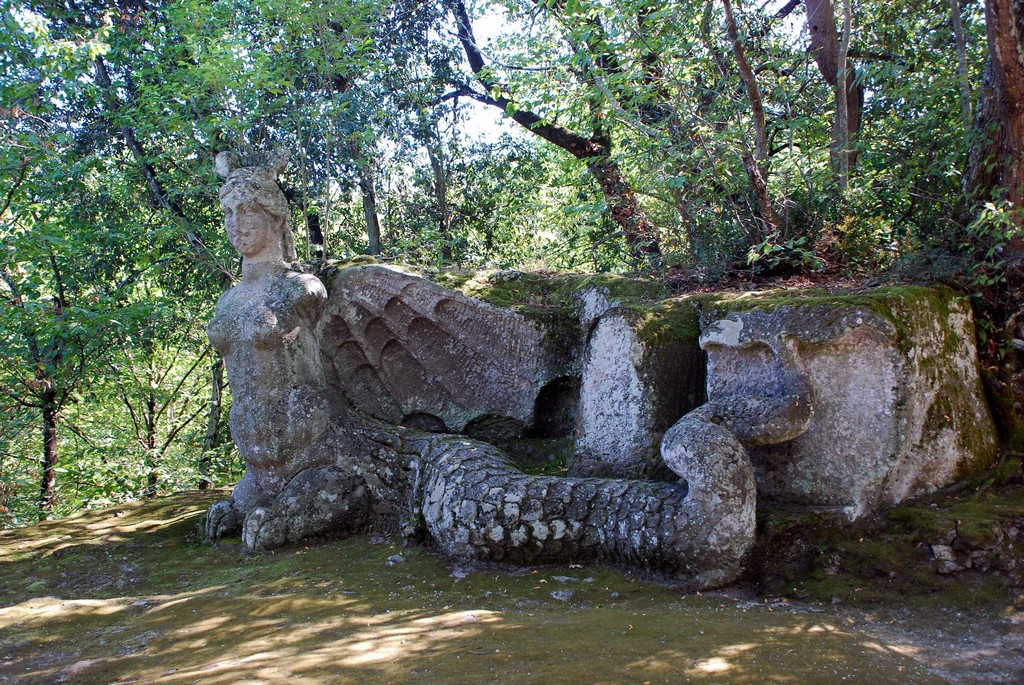 By Yellow.Cat from Roma, Italy – Echidna – Furia alataUploaded by tm, CC BY 2.0, https://commons.wikimedia.org/w/index.php?curid=24643204
By Yellow.Cat from Roma, Italy – Echidna – Furia alataUploaded by tm, CC BY 2.0, https://commons.wikimedia.org/w/index.php?curid=24643204
1 comment
Comments are closed.